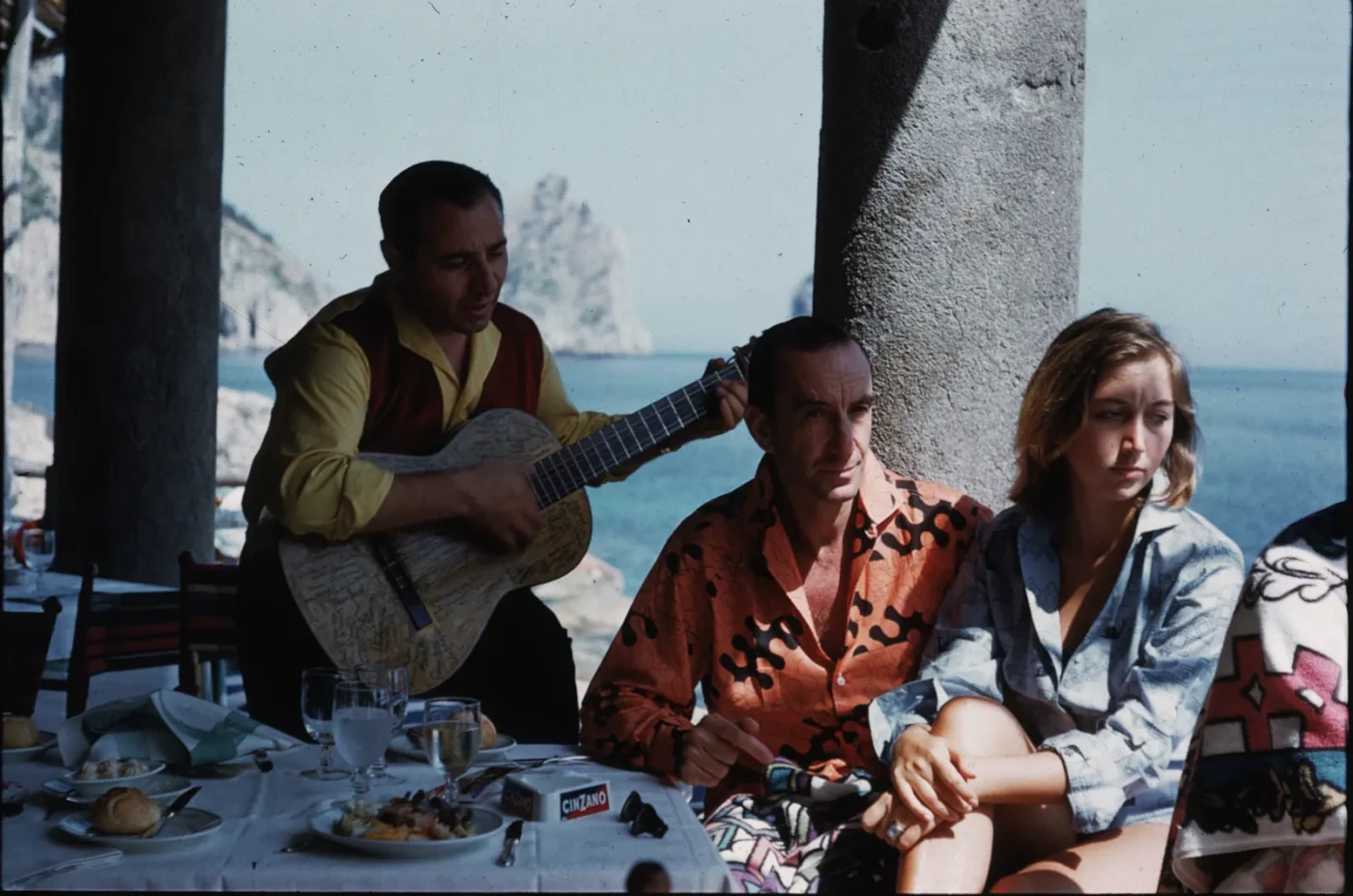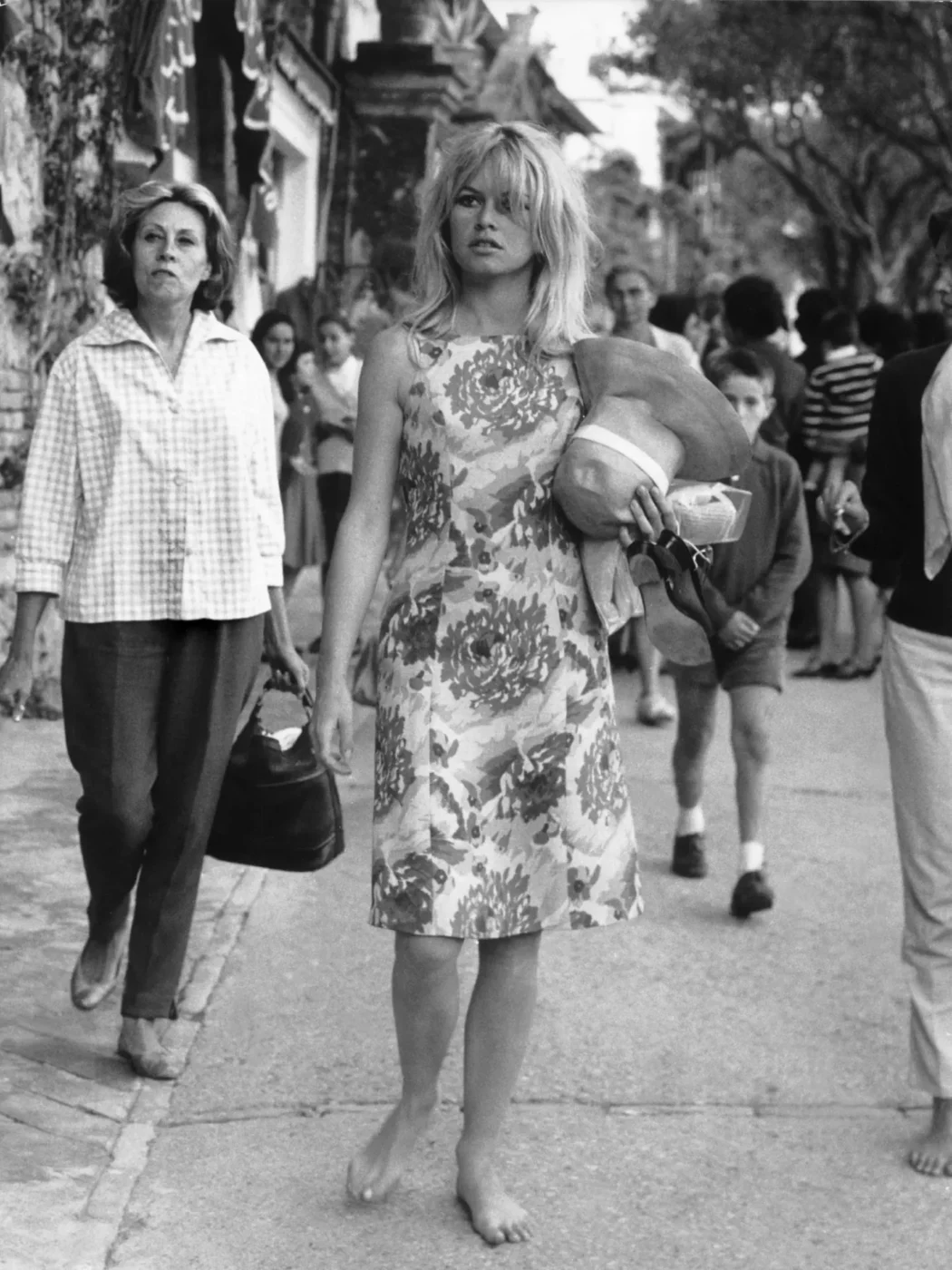From insalata caprese to perfume ads to images of celebrities vacationing on the Costiera, the 10 square kilometer island of Capri off the Sorrentine Peninsula in Campania has almost unintentionally become one of the places most synonymous with Italy, or at least an Italian summer. Tourists of all shapes and sizes swarm the Marina Grande all season long, both for the clear waters and also for the glamorous shops, restaurants, and hotels. The moneyed crowd that brought their spending power here has altered the fabric of the island, shellacking it in a high-gloss veneer.
However, amidst these changes, Capri’s essence persisted, rooted in its ancient history when it was first inhabited by the Greeks in the 8th century B.C. and rediscovered by the Emperor Augustus, who found his own private paradise in the steep limestone cliffs, secret coves, and lush forests. Today, this remains the best version of Capri: the one that is stripped back, past the manicured pathways of name-brand stores. It’s found while wandering the winding cobbled streets lined with bougainvillea, smelling the zesty perfume of the lemons at the morning markets, and feeling the fine linen threads spun by local artisans into crisp button-downs; in the island’s parks, on the northern side of the island in Anacapri, and while bobbing up and down in the crystalline waters.
Below, our local’s guide to this side of Capri, and where to eat, shop, lounge, and hike to experience the island that’s a little more dolce far niente and a little less Dolce and Gabbana.

Capri in 1959
HOW TO GET THERE
From your home city, take the train to Napoli Centrale, and then a taxi or bus to Molo Beverello port. From there, the best way to reach the island is by ferry–there are more than 20 daily crossings–which takes approximately an hour.
WHERE TO EAT
Le Grottelle – Located close to Arco Naturale, this restaurant is a 15 minute hike from the piazza and immersed in the island’s nature. The simple setting and home cooking are a relief from the island’s glamor and justify the stroll, as do their ravioli capresi!
Columbus Capri – On Anacapri, the more local side of the island, there is one of the island’s best restaurants (or at least the best one where you can truly enjoy the island’s flavours). Their produce is sourced from the owners Vincenzo and Sabina’s garden and served on a beautiful terrace. Their pasta with cicerchie, fritto misto, torta caprese, and homemade orange liqueur will undoubtedly have you agreeing with us.
Da Gelsomina – This classic trattoria has been run by the same family for generations and boasts a breathtaking sunset view in Anacapri. Even if you think you’ve had enough ravioli capresi, please do yourself a favour and order them once again. They also produce their own white and red wines from the vineyards right below the restaurant. The wines are simple and somewhat rustic, but it’s absolutely worth trying them.
Da Tonino – The vast wine cellar (with upwards of 2,000 different bottles!) and a commitment to quality, locally-sourced produce earned this upscale eatery a spot on the 2023 Michelin Guide. Must order: the eggplant parmigiana.
Villa Margherita – With daily fresh-caught fish and seafood, homemade pastas, and an elegant, curated setting amongst olive groves with views of the bay, Villa Margherita is a refreshing respite from the busy city center. Order the spaghetti alla chitarra with amberjack, capers, olives and cherry tomatoes, or the paccheri with squid ragu and eggplant.
Lo Sfizio – On your way to or from Villa Lysis, stop for a simple, local lunch at Lo Sfizio, a favorite spot amongst locals and Italian vacationers. A place with no frills nor view, but serving traditional Caprese fare that won’t break the bank. Order their ziti with eggplant and cherry tomatoes.
Ristorante Il Riccio (Anacapri) – The most beautiful restaurant in Capri with a blue and white interior, a terrace on the sea, and a dessert room that you will never forget
To party, there is one place and one place only… ANEMA E CORE

Pizzette Capresi
WHERE TO SHOP
Da Costanzo Capri – A pillar in terms of fashion since 1963, their sandals are truly unique. From the classic leather T-strap model to ones adorned with stones and Swarovski crystals, they are all handmade, just as they have been for 60 years.
Bottega Capri – A “sandali capresi” institution since 1917; Bottega is the first shop that produced these traditional sandals that have dressed the feet of icons like Jackie Onassis and Sophia Loren.
Delfina – Lovely, Capri-made swimwear in romantic prints, along with coordinated shirts, dresses, and sarongs.
Laboratorio Capri – One of Capri’s most iconic shops; everything is handmade, using premium quality fabrics like silk and linen. Bold patterns and bright colors are their signatures.
La Parisienne – Despite the name, this shop is distinctively Capri. Rumor has it that they “invented” capri pants for Jackie O when she used to summer here in 1960.
Cathaleia Capri – A young and fashionable shop in Capri’s center. This boutique offers a selection of well-curated jewels, hats, shoes, and beachy dresses.
Chantecler Capri – These are probably the most Capri-esque jewels you will find. Many of their pieces take inspiration from local flora and fauna and sparkle with precious gemstones. Their “Campanelle” (little bells) have become a sort of collectible; you’ll surely recognize them when you see them.
100% Capri – Luxury linen shop, and a must. Their men’s white shirts are an evergreen garment to have in your wardrobe, regardless of your gender.
Capri People – Original sunglasses designed in Capri, now quite popular everywhere.
Capri Object by Daniela di Stefano – Here you can find one-of-a-kind homewares made by local artisans. From silver to glassware, their pieces reflect the colors of the island. A popular favorite is the rose-shaped candle.
Carthusia Perfumeria – This fragrance shop sells their own line of locally-made perfumes, soaps, body lotions, and home fragrances, all inspired by the island. For a great gift, you can personalize the label of your perfume.

WHERE TO TAKE A DIP: BEACH CLUBS
Le Ondine Beach Club – With its white and light blue stripe umbrellas and 200 sunbeds and deck chairs, this brand new beach club offers a lovely setting for couples. The club features a lounge bar and restaurant with light cuisine. The club has expansive views of the bay of Naples, and, thanks to its location close to the harbor (less than a 5 minute walk), it’s convenient if you’re only coming for a day trip (you can even store luggage here).
Lo Smeraldo – Half a kilometer away from Le Ondine is Lo Smeraldo. Here, the waters are crystal clear and the club’s private stairs and a ramp lead directly into the water. Sunbeds and deck chairs are turned to face the sun, which, in this case, means you get a beautiful view of both the sea and the mountainous island. To take a break from lounging, the restaurant’s offer local traditional dishes (I recommend their pasta alle vongole and frittura di calamari) and the terrace overlooks the water.
Bagni di Tiberio – With its crystalline bay, this ancient bagno is one of the most beautiful on the island. Its removed location is reachable in five minutes by boat (transfers depart every 15 minutes from the harbor). It’s one of the few bagni with an actual sandy beachfront, which, coupled with its location tucked up against the base of the tree-covered rocky hills, makes it stunningly picturesque. If you get hungry, order the uovo alla monachina (stuffed and fried egg).
Il Riccio – Overlooking the famous Grotto Azzurra (Blue Grotto), Il Riccio is probably the most photographed beach club in the Mediterranean Sea. Its most famous for the “stanza delle tentazioni” (“temptation room”) which offers all kinds of desserts. This beach club is more fashionable and exclusive than the others, but it’s worth the hype (and the view).
Da Giorgio al Cucciolo – Offering a similar perspective to Il Riccio but from a higher elevation and at a more affordable rate, this establishment embodies tradition, being family-owned and nestled away from the hustle and bustle. It provides a serene escape from the glitz and crowds, with truly priceless sunset views.
Torre Saracena — On the other side of the island in Marina Piccola, this beach club is tucked into a cove that also boasts a sandy beachfront. The water is crystal clear and one of the most incredible places to swim. If you swim out far enough, you can even see the famous faraglioni triplet rocks. It tends to be a bit less crowded and their kitchen is superb (try the pasta gamberi e zucchine and fried montanare).
Fontelina — The food is no longer why we go to this beach club, but we can’t blame you for wanting to go: its location right by the faraglioni and their blue and white striped beds and umbrellas placed right on the rocks make it by far one of the most scenic spots.

Photo by Desire Falk
WHAT TO DO
Villa Lysis (40 minutes walk from the Piazza) – Built by a noted “eccentric” (that’s old-timey speak for “gay”) and Parisian count, Jacques d’Adelswärd Fersen as a place to go with his lover to escape being the subject of scandal in France. He constructed the ornate villa in the hills of Capri in 1904, and remained there happily in self-exile. They would host bohemian salons and the place became a sort of retreat for the avant-garde (and queer) literati of the day. The villa now hosts a museum with temporary exhibitions, and the Belvedere terrace is one of Capri’s most beautiful.
Villa Jovis (45 minute walk from the Piazzetta) – Emperor Tiberio constructed 12 villas in Capri in the First Century A.D., and this was the central, largest one, spanning over 7,000 square meters. From here, take in dazzling views of the whole Gulf of Naples and the center of Capri.
Giardini di Augusto and Via Krupp – Just a few meters away from the Piazzetta, these botanical gardens are amongst the most beautiful places to see in Capri. From the top, the gardens offer an incredible panorama on Via Krupp, one of Capri’s most famous roads, Marina Piccola, and the famous faraglioni triplet rocks.
La Certosa di San Giacomo – Capri’s oldest historical building, dating back to 1371. It was originally a monastery, then a prison, and is now a high school. During summertime, it hosts events and concerts under its rounded arches.
Villa San Michele & Axel Munthe Museum (Anacapri) – Axel Munthe, the prominent Swedish physician who built this villa, said, “I want my house open to sun and wind and the voice of the sea, like a Greek temple, and light, light, light everywhere!”. And he succeeded–the airy galleries house important Roman and Etruscan works, while the lush gardens give way to a beautiful park and sanctuary for migratory birds.
Monte Solaro – In between aperitivo and ravioli capresi, make sure to include a hike to Monte Solaro. After all, dolce far niente wouldn’t be #dolcefarniente without a bit of work here and there. For the faint of heart, take the gondola up–if you’re scared of heights, this is the best view to fight your fears.
Il Sentiero dei Fortini – This incredible walk stretches from the Grotta Azzurra (blue grotto) up to the lighthouse of Punta Carena, offering stunning views along the way.

Courtesy of Villa San Michele









